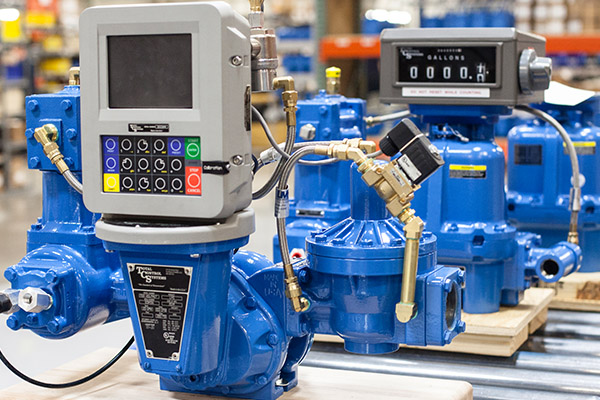Currently Empty: $0.00
How Do You Choose a Flow Meter?

Where Do I Start?
Choosing a flow meter can be a very overwhelming prospect. Sometimes it can be hard to know where to start. You have to wade through finding out which flow meter technology out there might best serve your application and your budget. Then there are countless manufacturers out there with multiple models all offering something a little different. You also have to ensure that the specific variable of your process fall in line with the specifications of each individual model. Knowing what information you even need to start with can be difficult.


Make A List and Check it Twice
Nobody likes to spend time or waste money that they could have saved with a little preparation. When it comes to finding the best fit for your process application, being organized and thorough can have big payoffs in making sure that all factors are appropriately compensated for in your choice. Accidentally overlooking some variable that ends up in equipment malfunction, damage, or failure can be avoided by asking the right questions at the beginning. Below is a farily comprehensive list of questions to help you build a complete application profile for an optimum selection process.
1. Price/Customer Service
- What do you have in your budget to spend? While it is tempting to think that price needs to always be the first consideration and to think that the lowest priced option is always the way to go, that can lead to headaches down the road. Cheaper models, options, or technologies may not provide the same length of service life, require more maintenance, or may require more downtime for things like calibration. These things all cost money in the long run and should also be added to the total lifetime cost of the instrument. Ask what the average life span of the model you are looking at is.
- Also ask about warranties. How long is the instrument covered and does the company you are purchasing from have a known customer service record for supporting their instrumentation in an accessible and personal manner. This can make all the difference in ensuring that an instrument has been correctly installed and to easily troubleshoot any questions that come up as part of that process.
- Another aspect is how long will it take to install? Will it require a shut down of a critical existing process that will cost money if it is shut down or can it be installed without this issue?
- It is important to think in terms of total value and not just the initial cost. What may be cheaper at first may cost much, much more in the long run.
- If you are looking to replace a part that has shut down a process, lead-time for the replacement is also an important consideration. Can you get it fast to get the process back up and running?
- Wouldn’t it be nice if you could try one out first to make sure it works? Some companies are open to the idea of suppying short term demo units to ensure that it is the correct solution for the application.
2.The Basic Process
- Who will be using it? What do they need to use it for? Where will it be placed?
- Does the process require totalizing or batching capabilities?
- Is visual rate indication needed only? Is a switch or transmitter needed? Is local or remote indication needed?
- Getting the basic layout of the process and the people involved will help you in selecting certain features.
3. The Immediate Characteristics/Surroundings to the Place of Installation
- What is the size of the pipe and what is it made out of?
- Is the environment around the area stable or variable? Is there danger of explosion? Is the area a harsh environment?
- What length of straight run of pipe is possible before and after where they instrument will be placed?
- Will there be other types of instrumentation placed close to the flow meter on either the upstream or downstream?
- Are there space limitations where the installation will need to be that restrict the size that the instrument can be?
- Will the installation are require a certain angle that the instrument will be installed at?
4. The Media Characteristics
- This is an important one. Many times it is the only factor considered. While it should be factored, it is still important to get a larger picture of the application than just the media characteristics.
- Is it a liquid, gas, vapor, steam, slurry, multi-phase to be measured?
- Is the media clean or dirty?
- Is the nature of the media corrosive?
- What is the media density, viscosity, temperature, pressure, and do these remain consistent?
- Is the media conductive and if so, how much?
- Is the media newtonian or non-newtonian in nature?
- Does the media have any coating or crystallizing properties?
- Does the media have any foriegn objects? If so, what are they likely to be and how large are the particles?
- Is there any suspended particulate matter? If so, what are they and how large will the particles be?
- Any ferrous material in the flow?
5. The Flow Profile
- Is it likely that the media may contain air bubbles?
- Is the process designed so that the pipe will always be totally full of the media?
- Will the flow rate remain relatively constant?
- Is there a chance of pulsating flow?
- Will the flow be largely laminar or turbulent?
- What sort of turndown is needed to accomodate the range of flow? Minimum flow? Maximum flow?
- Is the flow in one direction or is bi-directional capacity needed?
- Is pressure loss from the flow meter an important consideration to the process?
6. Accuracy/Repeatabilty/Resolution
- How exact of a measurement does your process require?
7. Certifications
- What sort of regulatory compliance are you subject to? Do you have hygienic requirements? Explosion-proof concerns?
8. Reporting/Recording/Communications
- Who needs to see the data and how do they need to see it?
- Do you already have a certain communication protocol in place that you need the instrument to also have?
Still Need Help? Use A Trusted Technical Source.
Does it still sound intimidating and like a bit too much to tackle on your own? Don’t worry. There are many knowledgable sales engineers out there who know exactly how to guide you through this process to the best all-around choice for your exact process. The field of instrumentation is always evolving and consulting someone is always an advantage. KOBOLD has experts at your disposal standing by to help you. However, even when using the services of a professional, it is still key to have most all of the information gathered before you pick up the phone, so the process can be as smooth and timely as possible.

